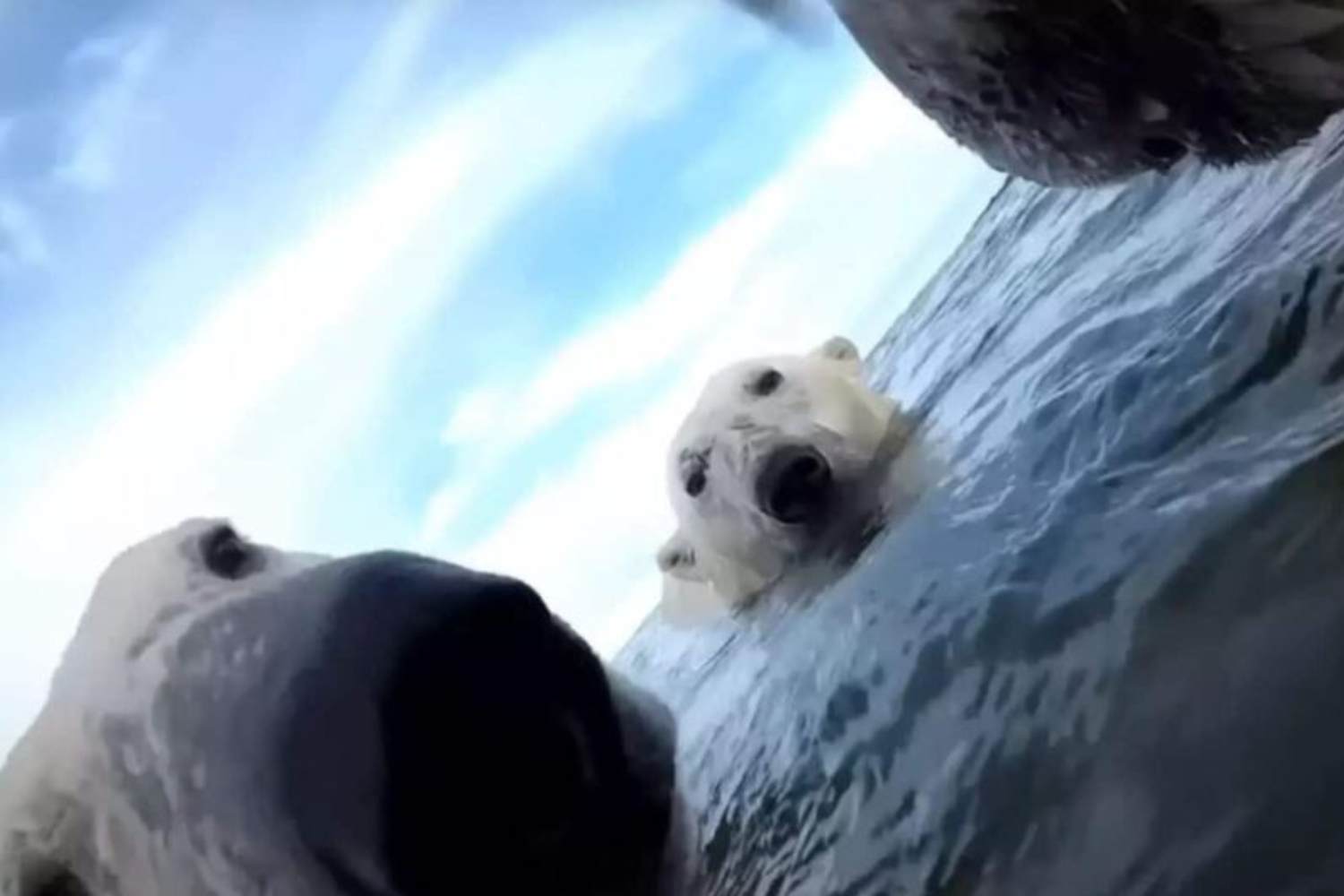Footage recorded over three years shows how polar bears, forced onto land due to disappearing ice, are unable to survive by feeding on terrestrial food

Table of contents
A team of scientists monitored 20 polar bears in Hudson Bay, Canada, equipping them with small GoPro cameras to observe up close how the species is responding to climate change. The footage, collected over three years, offers a direct look at the new feeding habits of these apex predators, forced to spend increasingly longer periods away from the sea ice where they normally hunt seals.
The research, published in Nature Communications, confirms that the ice-free season has extended by three weeks compared to 1979, pushing bears to spend longer periods on land. But their attempts at adaptation are proving insufficient.
Footage reveals desperate strategies
The recordings reveal striking scenes: bears feeding on bird carcasses, grazing on grass and berries, or scavenging through marine debris to survive. In some cases they’re filmed playing in water or chewing on moose antlers, behaviors rarely documented until now.
Biologist Anthony Pagano of the US Geological Survey, who coordinated the study, explained that these images show the intelligence and adaptability of the species, but also the limits of such strategies. The bears alternate between periods of rest and attempts at hunting and foraging, but the energy balance remains negative.

@USGS
Plummeting weight and warning signs
Of the 20 specimens observed, 19 lost weight, with one individual recording a loss of over 80 pounds (36 kg). Despite their efforts, terrestrial food doesn’t provide the necessary caloric intake. Expert Andrew Derocher from the University of Alberta described these behaviors as “acts of desperation,” emphasizing that “hungry bears take more risks than well-fed ones.”
The problem isn’t just about diet: in Hudson Bay the polar bear population has declined by 30% since 1987, a clear signal of the Arctic ecosystem’s collapse. Increasingly more individuals are undertaking long-distance swims, an abnormal behavior revealing stress and exhaustion.
The only hope: saving the ice
Although in regions like Greenland and Svalbard some bears can still hunt on glacial ice, scientists warn that this isn’t true adaptation but rather a temporary survival strategy. Organizations like Polar Bears International emphasize that the species’ salvation depends solely on reducing emissions and containing global warming. As climatologist Katharine Hayhoe reminds us, “We need all possible solutions and everyone’s commitment.”

@Nature Communications
Source: Nature Communications
